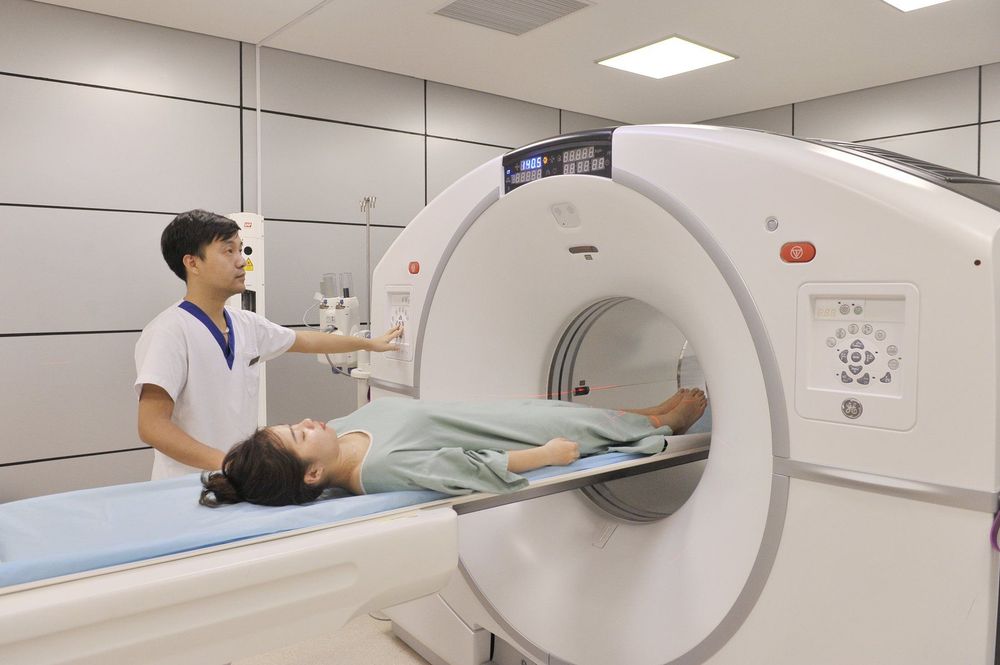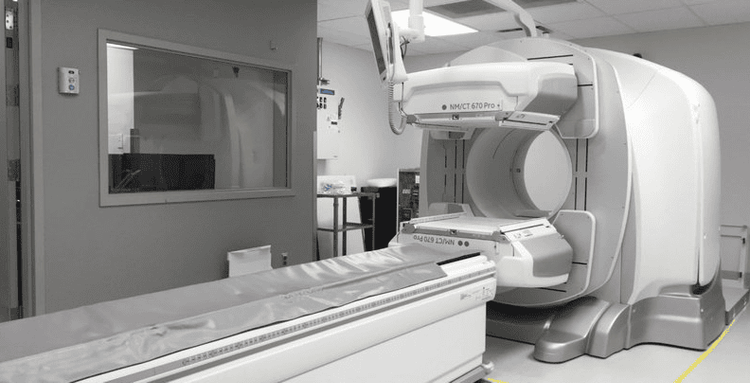This is an automatically translated article.
Late-stage cancer can spread to any part of the body, but cancer most often spreads to the bones. Symptoms of bone metastases are often not obvious.1. Symptoms of bone metastases cancer
Cancer cells can spread to any bone in the body, but are most commonly found in the spine, pelvis, and femur.Bone metastases may not cause any symptoms, as the cells grow, the following signs are common:
Bone pain. Fragile bones. Numbness, paralysis of four limbs or legs, urinary retention Numbness, paralysis of four limbs or legs, urinary retention..
2. Diagnosis of bone metastatic cancer

Chụp cắt lớp vi tính giúp chẩn đoán, đánh giá tình trạng xương
X-rays X-rays can show signs of cancer spreading into the bone. This simple test is often used first when a cancer patient presents with bone pain or other symptoms that suggest bone metastases.
In addition, X-rays also help detect fractures due to metastases.
Computed tomography (CT) This method can analyze 10 times more images than conventional X-rays and helps determine the location for bone biopsies under tomography.
Computed tomography is also helpful in assessing the size and shape of metastatic tumors in the bone as well as bone strength.
Magnetic resonance imaging (MRI) Through magnetic resonance imaging, doctors can see the image of invasion of the marrow and surrounding soft tissue and probe the spinal canal. Magnetic resonance imaging is a highly sensitive exploratory technique for bone marrow exploration.
Bone scintigraphy Bone scintigraphy is the most sensitive method for detecting bone metastases and has the advantage of exploring all skeletal systems that no other method can do.
Bone scan helps to detect bone metastases before the patient begins to have symptoms, detected 3-6 months earlier than X-ray.
Bone scintigraphy can also be used to monitor the response of bone metastases to treatment.

Xét nghiệm nước tiểu có thể dùng để hỗ trợ chẩn đoán bệnh
- Calcium: Bone metastases cause bone When bone dissolves, blood calcium levels rise, causing hypercalcemia
- Alkaline Phosphatase: When bone dissolves, alkaline phosphatase levels may increase. However, the liver can also produce alkaline phosphatase, so elevated phosphatase levels can also indicate liver problems.
- Urinalysis: Certain substances can be found in the urine when bones are damaged by metastatic cancer.
- Tissue biopsy: In case the patient has not been diagnosed with cancer before, take tissue from the suspected cancer site to determine whether the cell is malignant and can identify bone metastases from the cells. of any organ in the body. If the patient has been diagnosed with cancer before, check for bone metastases by bone scan and blood test results, no biopsy is needed.
3. Detecting bone cancer by bone scan at Vinmec Times City

Máy chụp xạ hình xương toàn thân Tc99m - MDP tại Bệnh viện Đa khoa Quốc tế Vinmec
At the Nuclear Medicine unit - the imaging department of Vinmec Times City International Hospital provides full-body bone scintigraphy Tc99m - MDP
Advantages of bone scintigraphy:
Method Bone scintigraphy allows visualization of the entire skeletal system in the body, with high sensitivity. It is the preferred method of first choice in all cancer patients at risk of bone metastases. Helps to evaluate the function of the entire bone system, evaluate osteomyelitis, detect primary bone cancer, and metastatic bone cancer that no other method can replace. Used to diagnose patients:
Suspected cancer: Detecting primary bone cancer, bone metastatic cancer Osteomyelitis, pathological fracture Avascular necrosis Closed bone trauma. Metabolic diseases: osteomalacia, osteoporosis.. Unexplained bone pain Osteoarthritis, osteomyelitis Determine the site for bone puncture, bone biopsy Monitor response to treatment for bone metastatic cancer. Vinmec Times City is equipped with the world's leading medical equipment system, providing high image quality, helping to diagnose diseases early. Professional team of doctors with experience, in-depth and methodical training at home and abroad, many doctors with long years of experience in nuclear medicine.
In addition to recognizing symptoms of bone metastases, laboratory tests are very important in early detection of bone metastases. Bone scintigraphy allows early diagnosis of bone metastases even when the patient has no symptoms and earlier than other diagnostic methods.
Please dial HOTLINE for more information or register for an appointment HERE. Download MyVinmec app to make appointments faster and to manage your bookings easily.













